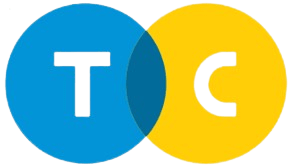Service management has become an important aspect of organizations in their daily routine operations. It is because the service management field has been linked with the entire organizational structure and laid deep effects on overall performance and productivity. Along with its importance, there are also many challenges and issues regarding service management that an organization faces in its daily routine operations. Tackling these issues is never an easier task for organizations. We said this because there are so many solutions to these daily routine issues that it becomes difficult for organizations to find the suitable one.
ITIL and Agile are also one of these solutions that an organization commonly uses to resolve daily routine issues regarding service management. They are important for organizations because they always work well regarding issues. But the real problem is to determine if they are similar, different, or opposite concepts. We said this because, in some cases, they are so similar that they seem like two concepts of one shape, but in some cases, they are so different that they seem opposite concepts.
We have discussed these two concepts in many of our previous articles. But in this article, we have specifically focused on some common differences and similarities between ITIL and Agile. In other words, we have discussed whether it would be right to say Agile vs ITIL or whether we should say ITIL and Agile. We hope it would be really helpful; for you in understanding the resemblance and differences between these two concepts. But before going into details, first, we should know the basic concept of both concepts. It is because this will help you understand the topic more frequently. So let’s start with our topic.
What Is ITIL?
A typical shorthand for “Information technology infrastructure library,” or ITIL. IT Infrastructure Library (ITIL) is a set of guidelines for the systematic choice, deployment, and evolution of IT services inside an organization. It’s one of the IT governance frameworks that offers a methodical approach to managing information technology. ITIL was developed with the intention of boosting the productivity, precision, efficacy, and predictability of IT services.
ITIL was established in the 1980s, at a time when data centers were distributed and used a wide variety of technical infrastructures. As a result, people lost faith in the reliability of IT support. It was in 1989 that the United Kingdom’s Central Computer and Telecommunications Agency (CCTA) created a well-defined framework for approaching IT as a service; they dubbed it IT Infrastructure Library, version 1. ITILv2 was published by the Office of Government Commerce, which was formed after CCTA was absorbed into it in 2000.
IT Infrastructure Library version 3 was first released in 2007 and updated in 2011. Axelos was established in 2013 by the United Kingdom’s Cabinet Office and Capita PLC. One of the goals of this group is to “make individuals and organizations more productive by providing practical counsel, material, and qualifications distilled from real-world experience and evolving practices.” In 2017, Axelos launched version 4 of the IT Infrastructure Library (ITIL). The most recent release of ITIL, version 4, is also the most comprehensive.
What Is Agile?
Agile refers to a methodology framework for creating software. Agile is not a framework or piece of software, although it serves as a foundation for such things. This way of thinking can be very useful in the realms of software engineering and service management. ASM, as defined by Jaynee Groll, “ensures that service management processes reflect agile values and are structured with “just enough” control and structure to enable the delivery of services that enable the ability to accomplish something when and how it is needed or wanted.” A Utah meeting in 2001 gave birth to the “Agile manifesto,” the foundational document for the Agile methodology. Agile Alliance is the refined form of this concept. This is a summary of its key ideas or principles.
- Individuals and interactions over processes and tools.
- Working software over comprehensive documentation.
- Customer collaboration over contract negotiations.
- Responding to change by following a plan.
ITIL And Agile (Similarities)
As a result of the comparison that was just made, we now see that ITIL and Agile are not particularly close friends, but they are also not competitors. This is because they share a number of characteristics in common with one another. The comparisons between them are broken down into the following categories.
- ITIL and Agile, which have many conceptual similarities, could create an improved combination for enterprises.
- They are both advocates of a method that is uncomplicated, speedy, effective, and risk-free. The distinction lies in parameters such as how easy or how fast something is.
- The enhancement of IT services is the primary focus of both ITIL and Agile, which means that their primary objectives are the same. It means that the path taken could be different, but the end result will be the same.
- The most recent version, ITILv4, includes expanded capabilities for collaborating with Agile. It adds several other notions that are comparable.
Agile Vs ITIL (Differences)
When we use the term Agile vs ITIL it means we are talking about ITIL and Agile are not the same things. There are numerous fundamental distinctions between the two. Some of these appear like competitors because of how different they are. They appear to be in direct opposition to one another. The following are some examples of such distinctions:
- While ITIL emphasizes process descriptions and systems that operate the process, Agile emphasizes people and interactions over procedures and technologies.
- The IT Infrastructure Library (ITIL) has bad notoriety for being overly strict and cumbersome. Agile, on the other hand, appears to provide an easy and quick procedure.
- Agile is a way of thinking that may be applied to any kind of work. It’s more of a way of thinking that can inform your decision-making than a series of rules to follow in order to get something done. ITIL, on the other hand, is a framework that supplies you with predefined descriptions of possible methods of completing your assignment. All the necessary processes and instructions are laid out in detail.
- IT Infrastructure Library (ITIL) improves preparation for frequent, foreseeable shifts. The procedure is oversimplified by its meticulous planning, but its rigidity poses a risk in the face of non-typical, unforeseen shifts. The rules provided by Agile allow for a degree of flexibility while making preparations for unexpected or unanticipated shifts. This is due to Agile’s emphasis on adaptability, necessitating modifications to the original plan based on new information. It follows that ITIL is preferable for routine adjustments, whereas an Agile approach is more appropriate for novel circumstances.
- Agile advocates for having the appropriate people in the right roles, while ITIL claims that customers care little about the people who are really delivering their services and that, instead, attention should be directed toward the service itself.
Conclusion
As a result of this comparison, we learned that there is a great deal of contrast between ITIL and Agile. Because of these disparities, it seems as though we are dealing with two completely different ideas. In many respects, they are diametrically opposed to one another, but on the other hand, they share a great deal in common. In spite of their differences, they were able to cooperate in order to achieve a common objective, which was the solution to a problem, and as a result, they reaped larger rewards.
Now comes the time for the all-important question: which option is the best? Its response is that there is no need to pick just one because you can use both of them simultaneously. It sounds fairly difficult, yet it is achievable. As a result of the significant differences between them, it is possible that they will engage in fierce competition with one another and experience friction; however, this can be easily avoided. Because of this, we recommend that you use a combination of the two rather than picking just one of them. It’s possible that combining these two ideas will lead to a more favorable outcome for you. That’s why it would be wrong to say Agile vs ITIL because they could work together.

